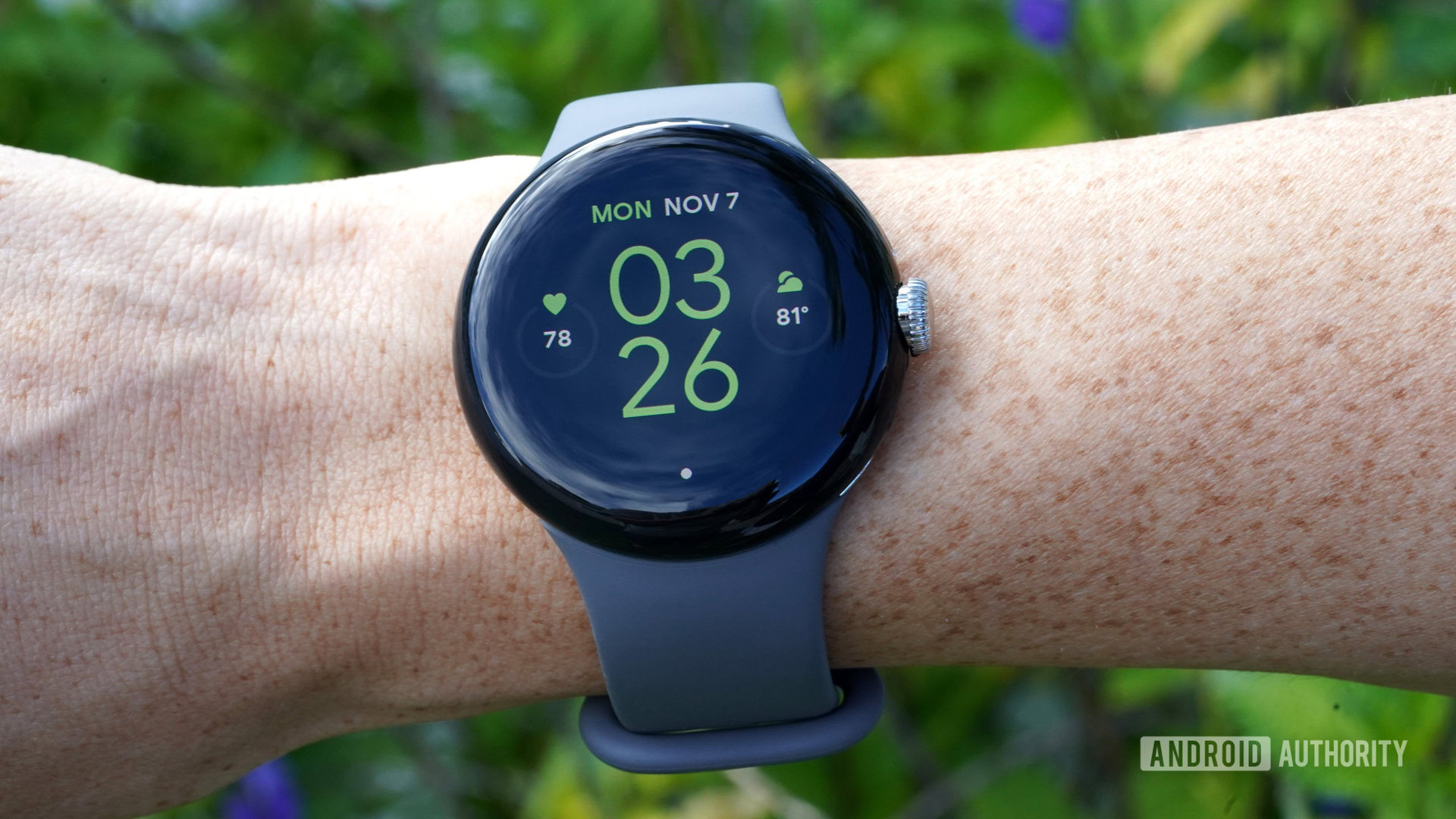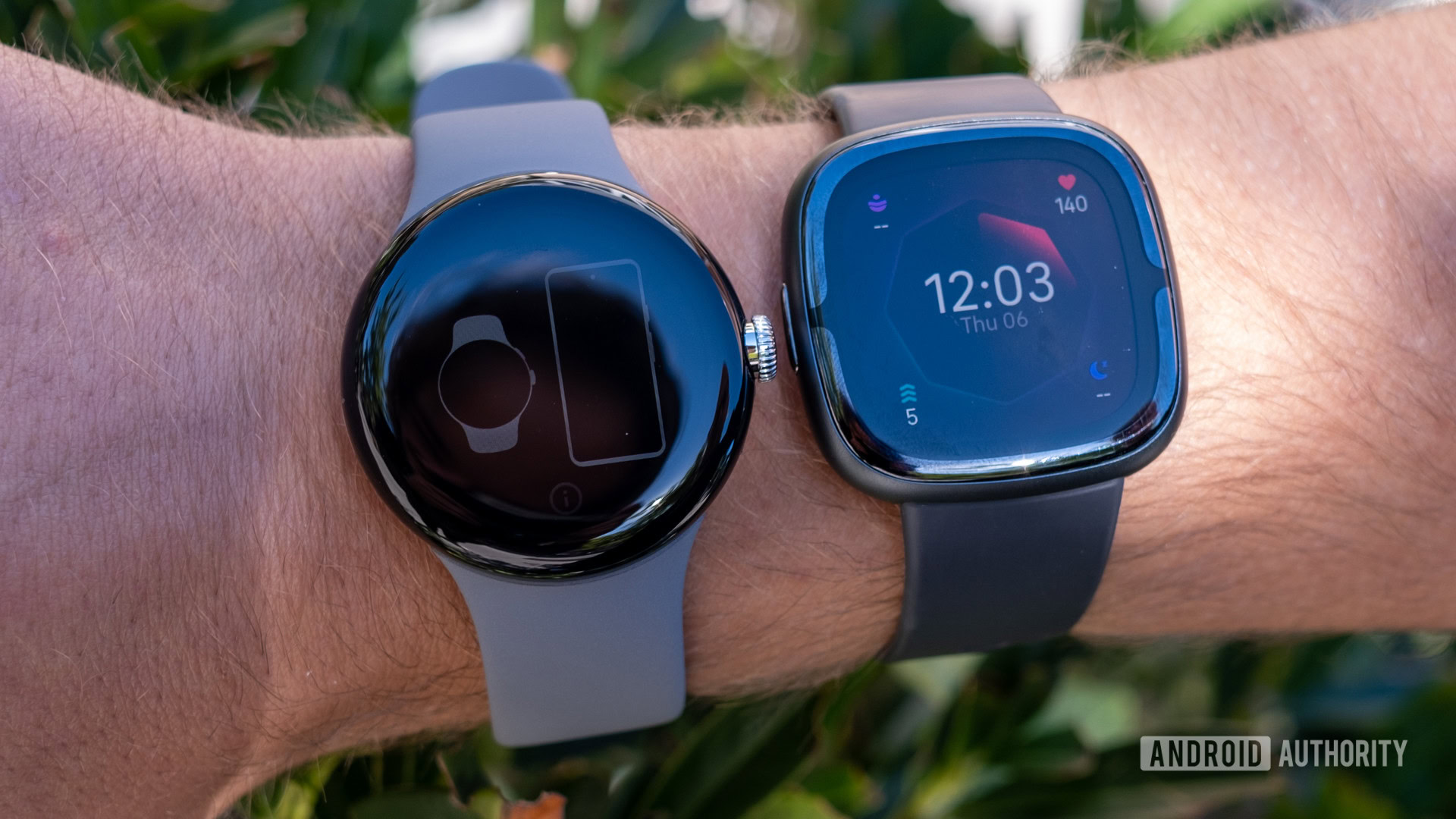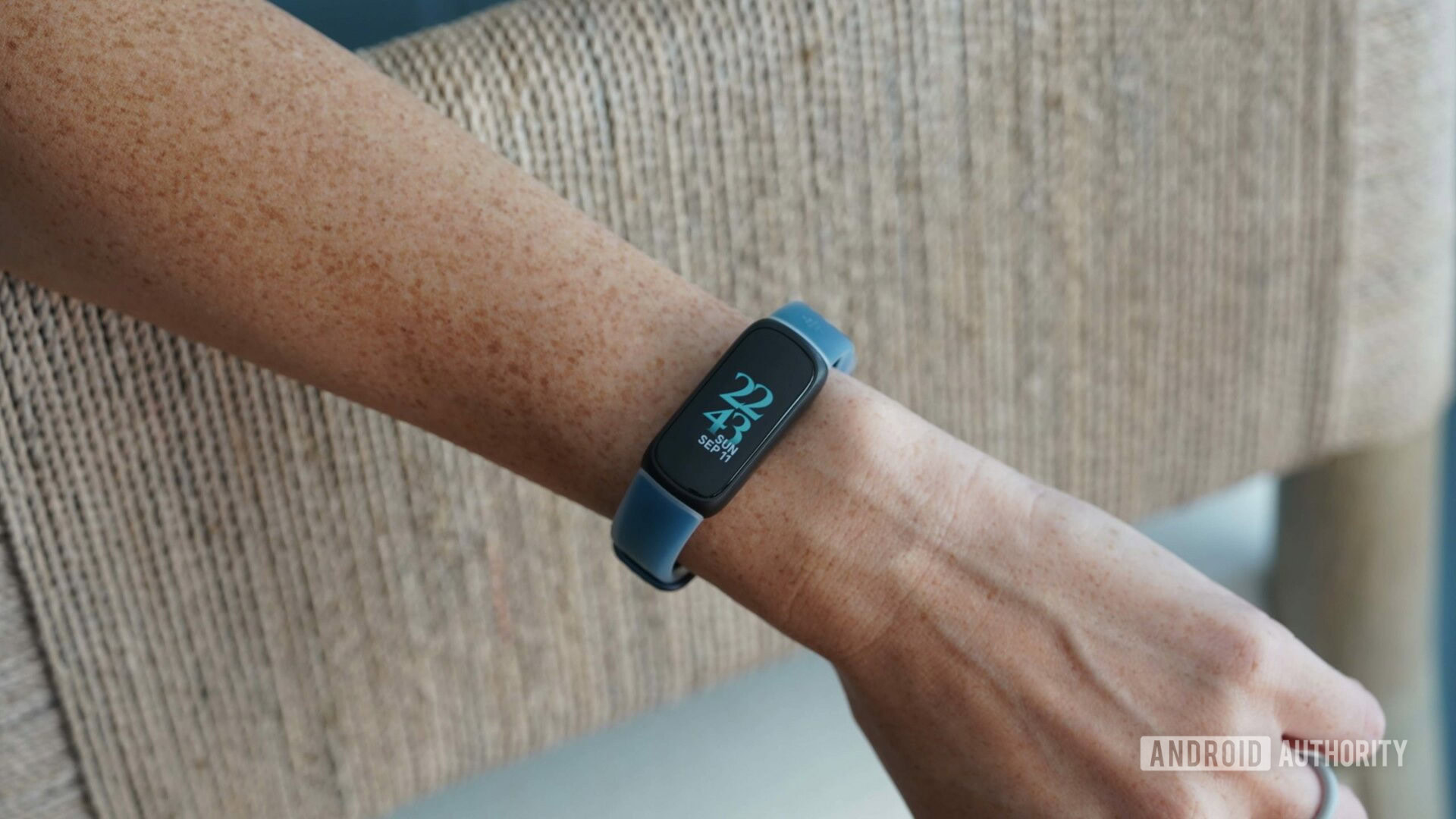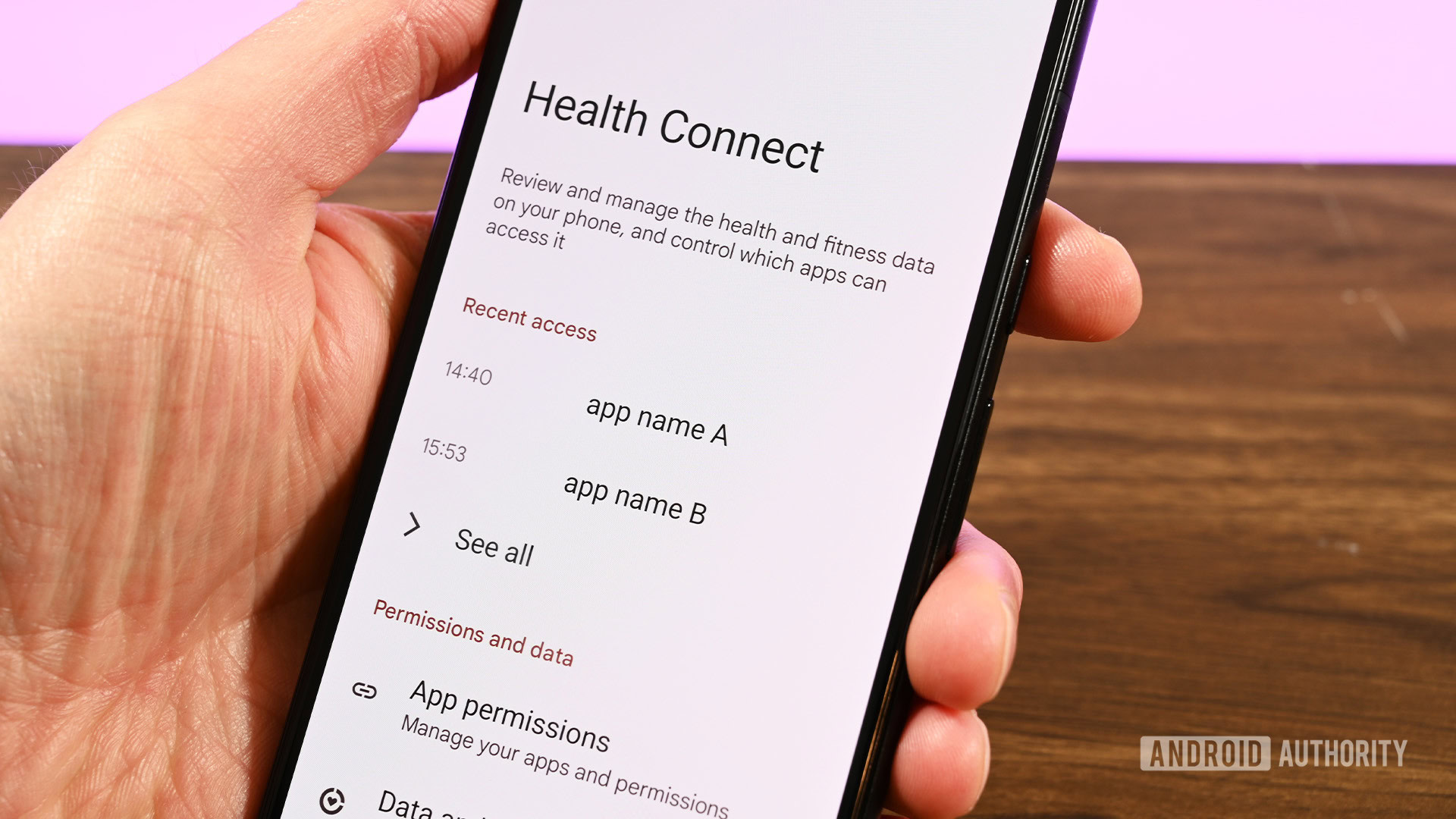Affiliate links on Android Authority may earn us a commission. Learn more.
Hey Google, I should be able to pair a Pixel Watch and Fitbit to the same phone
Published onFebruary 25, 2023

As someone who sports some of the best smartwatches primarily for health metrics, the lackluster improvement in battery life in the category has long been a pet peeve of mine. Those health metrics will only be as good as the amount of data I have. If the watch says 24 hours on the box, it should go 24 hours. But as we all know, that’s rarely the case for most users, let alone those like me who push their smartwatches with GPS-based workouts and a healthy amount of notifications.
It’s a problem that particularly plagues Wear OS wearables like the Pixel Watch, though the Apple Watch isn’t entirely immune to it either. In fact, I’d been eyeing the Pixel Watch ever since it was announced but opted for the Apple Watch Ultra primarily for the super-sized battery. Regardless, range anxiety on smartwatches is real, and it makes me long for my old Fitbit that could easily go a week or more on a charge.
But what if there was a way to use my old Fitbit alongside the Pixel Watch on the same account? That would draw me right back into the ecosystem. Here’s why it needs to happen and how it could work.
If you could use a Fitbit along with the Pixel Watch, would you do that?
One account for Pixel Watch and Fitbit: Convenience and versatility

I love health-first smartwatches. They’ve democratized health tracking and incentivized daily wear thanks to the added benefit of non-intrusive notifications and easily-reachable apps. But with great capabilities comes great battery drain, and most smartwatches just can’t go over a day of intensive use. Moreover, if I’m wearing a full-sized wearable, I want all of the functionality instead of a smartwatch-lite experience like that offered by Amazfit or Garmin’s long-lasting wearables. That said, there are occasions when I don’t need all that power.
I don't need a full-blown smartwatch when I'm sleeping.
Case in point: when I’m sleeping. Already heading towards zero by the end of the day, there’s rarely enough juice for a full night of sleep tracking left over — a pain point for most smartwatches. As a lifelong insomniac, I use sleep tracking to actively track sleep zones and improve my sleep quality. That said, sleep tracking doesn’t require a full-blown smartwatch. Why can’t I just swap out the Pixel Watch for a Fitbit to track my nightly sleep or lack of it? All while my Pixel Watch charges on a nightstand.
Formal outings are yet another occasion where I’d appreciate the ability to swap out my smartwatch for something a bit more inconspicuous. I’m the kind of guy who will whip out a mechanical watch when dressing up and I’m not alone in this. However, a formal occasion doesn’t mean I want to miss out on basics like step or heart rate tracking. A smaller fitness tracker strapped onto the other wrist is far more acceptable than dual-wielding watches.
Similarly, I don’t want to baby the glass-encased Pixel Watch when out on a trail. I’d much rather swap over to a more robust, usually cheaper, and relatively dispensable fitness tracker that does all the fitness tracking I need.
Making use of that Fitbit integration

To me, a large part of the Pixel Watch’s appeal is its deep integration with Fitbit. I’ve used the company’s products for years. It’s got granular details of my weight loss journey, my first marathon, and years of workouts. It’s why I’ve been eyeing Google’s watch over other Pixel Watch alternatives. Having my fitness data go into the same familiar data bank with years of trends to pore over is appealing.
Fitbit used to allow multiple trackers to pair to a single device. It's time to consider bringing back the feature.
It also makes me wonder why it’s so hard for Google to allow data from the Pixel Watch and Fitbit to sync to the same account. Surely, it is just the small task of data classification and segregating step counts by timestamps? Moreover, it wouldn’t be new for Google. Fitbit used to offer this functionality. In fact, it was possible to pair multiple trackers to a single account for several years. Fitbit would then automatically sync over data based on the last device used. The company canned the functionality when it introduced products that supported the Fitbit app gallery, but perhaps it is time to consider bringing it back.
In fact, Samsung’s wearables can do this without an issue. In a recent conversation, my colleague Calvin mentioned how the Galaxy Wearables app lets him automatically switch between any wearable paired with the app using skin detection. It lets him grab his older Gear S3 on the way out if his Galaxy Watch 4 is on charge. If Samsung has figured it out, why can’t Google do it too?
If Samsung can use skin detection to automatically switch between two wearables, why can't Google do it too?
Look, anybody considering the Pixel Watch for its highlight feature — Fitbit integration — has likely been in the Fitbit ecosystem for a while. I’ve got a box full of old Fitbit trackers lying around unused. Allowing users to reuse their old fitness trackers alongside the Pixel Watch is more than a goodwill gesture. It would be a fantastic move for sustainability and it would alleviate the biggest pain point of the Pixel watch — battery life. Additionally, it might spur users who prefer a dedicated fitness tracker to pick up a Fitbit to go alongside the Pixel Watch. That’s an easy win for Google.
Why limit it to just Fitbit?

So far, I’ve approached the problem from the lens of a long-time Fitbit user. However, Google has all the tools in place to solve this problem for any combination of smartwatches and fitness trackers. Google’s Health Connect platform was designed to let disapparate fitness apps speak to each other. Better Health Connect and Google Fit integration with the broader ecosystem of fitness trackers will enable just that. With fitness data being routed through Health Connect to Google Fit, all the app would have to do is sort data based on time stamps and integrate it with the rest of my health metrics.
Allowing users to pair a Fitbit with a Pixel Watch is a no-brainer for more reasons than just battery life.
I know, I know. I started off the feature request with a view toward solving the problem of battery life on the Pixel Watch. However, there’s much more to it. The Android ecosystem is all about freedom of choice and expression. I don’t want to be locked into just one wearable. Sure, using a Fitbit alongside the Pixel Watch would alleviate my concerns around battery anxiety but it would also open options for using other hardware based on where I am or allow me to substitute my Pixel Watch for a rugged tracker when engaged in a rigorous activity.